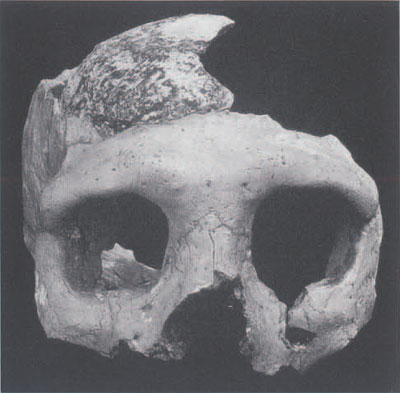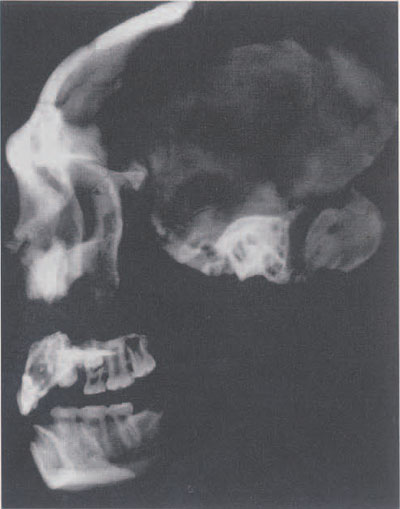
The Neandertals are among the most enigmatic of our earlier relatives. With their large browridges, low foreheads, and projecting faces lacking a chin, but with brains at least as large as ours. they have prompted many different theories to explain both their evolutionary development as well as their possible affinities with living Europeans. Fossil bones of this extinct human were first recognized in 1856, just three years before the publication of Darwin’s On the Origin of Species. These bones, from a quarry in the Neander Valley in western Germany, quickly became part of the controversy surrounding human evolution. Since that time, many more fossil bones of this extinct human have been excavated in various parts of western and eastern Europe and in Israel and Iraq. But their relationship to living humans has become even more difficult to unravel.
The Neandertals were known to inhabit Europe from about 150,000 years ago through the beginning of the last glacial period, which began some 95,000 years ago. Neandertals apparently remained in parts of Europe until about 30,000 years ago. During this long period, they made and used stone tools of the Middle Paleolithic Mousterian Culture. They had the use of fire, and buried their dead.
By about 30-40,000 years ago, more complex stone tools began to appear in Europe and the Middle East, marking the first appearance of the Upper Paleolithic cultures. Accompanying these more sophisticated tools were the first expressions of artistic skills—paintings and engravings of animals and other images on cave walls in many locales throughout southern and western Europe.
Anthropologists interpret this archaeologic: evidence in a variety of ways. Some scholars believe these innovations mark the arrival of modern human-like peoples who had evolved in Africa and who in time replaced the Neandertals in Europe and the Middle East. Other anthropologists believe that the Neanderthals were not very different from living humans and that it is certainly conceivable that they are part of the ancestry of Europeans.
Recently, we had an opportunity to contribute some interesting new evidence to this longstanding debate. With Dr. Morrie Kricuri. a radiologist at the Hospital of the University of Pennsylvania, we traveled to Zagreb, in Croatia, to produce the first complete set of radiographs of the fossils from the largest single Neandertal site in the world. This site, the Husnjakovo rock-shelter located in the village of Krapina some 25 miles north of Zagreb. was excavated at the turn of the century. yielding the bones of at least 4.0 and perhaps as many as 75 Neanderthal individuals, of all ages and both sexes.

The X-rays were digitized and studied at the University of Pennsylvania Museum, the work culminating in a monograph, The Kropina Hominids: A Radiographic Atlas of the Skeletal Collections, published this summer by the Croatian Natural History Museum. The radiographs provide one of the most complete and revealing glimpses of the health status of this extinct human group. One of the more unusual discoveries was radiographic evidence of the amputation of half the forearm of an adult. We don’t know how the lower arm was lost, whether th rough surgery or by accident, but the quality of the scar tissue on the bone suggests it occurred some considerable time before death.
In addition, there were several cases of osteoarthritis, especially in the bones of the neck, as well as several other pathological problems. including the earliest known benign bone tumor ever found. However, the vast bulk of the fossils document that the Krapina Neandertats were by and large a robust and healthy people. Their bone density and other indicators of good health and adequate nutrition demonstrated that this group, which may have lived as early as 130,000 years ago, was not on the edge of starvation, nor were its members on the losing end in the harsh struggle for existence.
The picture that emerges from this study is at odds with traditional reconstructions of the Neandertals, which often views them as poorly adapted to the environment, suffering from a variety of ills and stress-related medical problems. While this image may indeed characterize other Neandertals, those who lived in this part of Croatia more than 100,000 years ago were apparently well adapted to their environment and well able to provide for a healthy existence. In this reconstruction, in spite of the beetling brows and lack of a chin, they make fitting ancestors to the living peoples who now occupy Europe.
